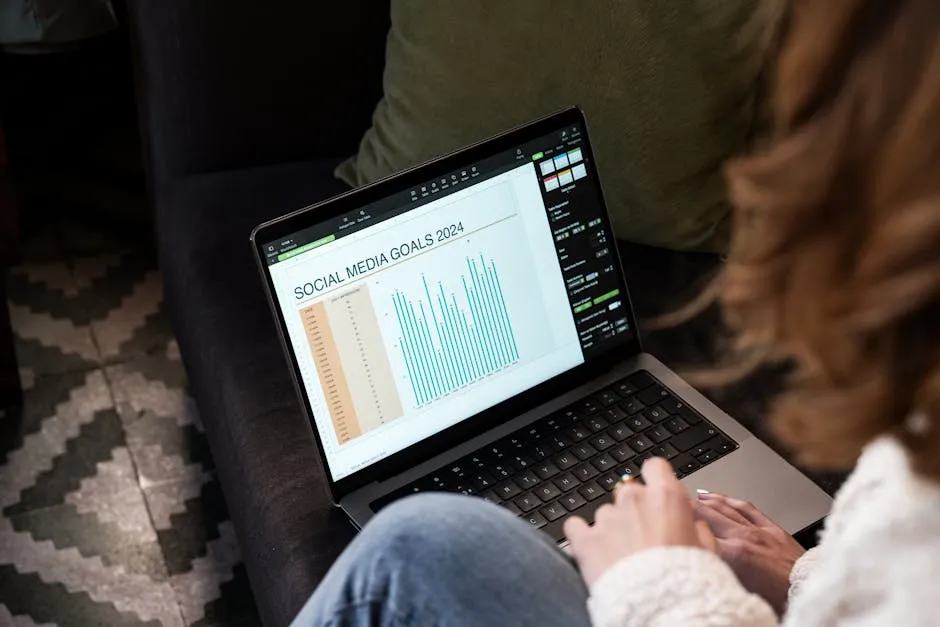Introduction
Welcome to the exciting world of AP Statistics! This course isn’t just about crunching numbers; it’s a gateway to understanding data’s role in everyday life. Whether it’s analyzing sports statistics, interpreting survey results, or making sense of medical studies, the skills gained here are invaluable.
As we gear up for the 2024 exam, it’s essential to recognize the significance of this course. Not only does it prepare you for college-level statistics, but it also equips you with critical thinking skills. The knowledge you’ll gain will help you navigate the sea of information in our data-driven society.
One key resource you’ll have on exam day is the AP Statistics formula packet. This two-sided sheet is loaded with essential formulas and concepts. It serves as your trusty sidekick, ready to assist you when the exam questions start flying your way.
But why is the formula packet so crucial? First, it reduces the pressure of memorization, allowing you to focus on applying the concepts. Second, it enhances your understanding of statistical methods, as you can refer to the packet while practicing problems. Ultimately, it helps you develop a stronger grasp of the subject, making you a more confident test-taker.
In this article, we’ll provide comprehensive insights into the 2024 AP Statistics formula packet. We’ll cover its structure, purpose, and the updates you need to know. By the end, you’ll be ready to tackle the exam with confidence. So, let’s get started!

I. What is the AP Statistics Formula Packet?
A. Definition and Purpose
The AP Statistics formula packet is your secret weapon during the exam. It’s a concise reference that includes all the key formulas you’ll need to solve problems effectively. From descriptive statistics to inferential analysis, this packet has it all. Its primary purpose is to support you by providing essential information at your fingertips, ensuring you can focus on analyzing and interpreting data rather than scrambling to remember complex equations.
To further enhance your study sessions, consider investing in a Study Planner Notebook. This handy tool helps you organize your study schedule, keeping you on track and reducing last-minute cramming. Plus, nothing feels better than checking off completed tasks!
Understanding the importance of the AP Statistics formula packet is crucial for your exam preparation.
B. Structure of the Packet
The packet is thoughtfully organized into categories for easy navigation. On test day, you’ll find it at the beginning of both the multiple-choice and free-response sections. This two-sided sheet features clear headings and neatly categorized formulas, making it a breeze to locate what you need when time is of the essence.
For example, one side covers descriptive statistics, including formulas for mean, median, and standard deviation. The other side dives into probability and distributions, sampling distributions, and inferential statistics. Familiarizing yourself with the layout can save precious seconds during the exam.

C. Updates for 2024
With every exam cycle, the College Board reviews and updates the formula packet to reflect the latest curriculum changes. For 2024, there are a few notable updates. While the core formulas remain the same, some definitions and examples have been refined for clarity. Additionally, new statistical methods and concepts may be included to align with current practices in data analysis. Be sure to review the most recent packet before the exam to stay ahead of the game and ensure you’re familiar with any additions or alterations.
With this foundational understanding of the AP Statistics formula packet, you’re set for success! Keep practicing with it in your study sessions, and soon, you’ll be mastering statistics like a pro.

II. Key Components of the 2024 AP Statistics Formula Packet
A. Descriptive Statistics
Descriptive statistics provide a summary of the data set, offering key insights into its distribution and central tendencies. The 2024 AP Statistics formula packet includes crucial formulas that students must be familiar with. It’s like having a cheat sheet for your statistical adventures!
1. One-Variable Statistics
When you’re dealing with a single variable, two formulas reign supreme: the mean and standard deviation.
The mean, often referred to as the average, is calculated using this formula:
\[ \bar{x} = \frac{\Sigma x_i}{n} \]Here, \( \Sigma x_i \) represents the sum of all data points, and \( n \) is the number of observations. It’s the most straightforward way to find the center of your data.
Next up is the standard deviation, a measure of how spread out your data points are. This formula looks like this:
\[ s = \sqrt{\frac{\Sigma (x_i - \bar{x})^2}{n - 1}} \]In this case, \( x_i \) denotes each individual observation, and \( \bar{x} \) is the mean. The lower the standard deviation, the more clustered your data is around the mean. If your data points were a party, a low standard deviation means they all showed up on time, while a high standard deviation means they arrived fashionably late—or not at all!

2. Two-Variable Statistics
When it comes to analyzing relationships between two variables, correlation and slope take center stage.
The correlation coefficient measures the strength and direction of a linear relationship between two variables. The formula is:
\[ r = \frac{1}{n-1} \cdot \Sigma \left[\frac{(x_i - \bar{x})(y_i - \bar{y})}{s_x s_y}\right] \]In this equation, \( r \) ranges from -1 to 1. A value closer to 1 means a strong positive correlation, while a value closer to -1 indicates a strong negative correlation. If your variables were a pair of dance partners, a strong correlation means they’re in sync, while a weak correlation could lead to some awkward footwork!
Next, we have the slope of the regression line, which helps predict one variable based on the other. The slope \( b_1 \) is given by:
\[ b_1 = \frac{\Sigma[(x_i - \bar{x})(y_i - \bar{y})]}{\Sigma (x_i - \bar{x})^2} \]Here, \( b_1 \) tells us how much \( y \) changes for a unit change in \( x \). A steep slope means a dramatic change—like how quickly your heart races when you see your crush!

B. Probability and Distributions
Understanding probability and distributions is crucial for mastering AP Statistics. This section of the formula packet will guide you through the basics and beyond!
1. Probability Formulas
In probability, two fundamental rules exist: the addition rule and the multiplication rule.
The addition rule states that for any two events, A and B:
\[ P(A \cup B) = P(A) + P(B) - P(A \cap B) \]This equation helps you find the probability of either event occurring. Think of it as trying to figure out the chances of getting your favorite dessert at a buffet—whether you pick chocolate or vanilla!
The multiplication rule works similarly but focuses on the probability of both events happening together:
\[ P(A \cap B) = P(A) \cdot P(B|A) \]This tells you how likely both events are when one event influences the other. For instance, it’s like calculating the chances of winning the lottery after buying a ticket on Tuesday.
Enhance your study experience with Highlighters Set for Study Notes. These vibrant tools will help you keep your notes organized and colorful, making studying a bit more fun—like a party for your textbooks!

2. Probability Distributions
The packet also outlines common distributions, including the binomial and geometric distributions.
The binomial distribution describes the number of successes in a fixed number of trials, with the formula:
\[ P(X = k) = C(n, k) \cdot p^k \cdot (1-p)^{n-k} \]Here, \( C(n, k) \) is the binomial coefficient representing the number of ways to choose \( k \) successes from \( n \) trials, and \( p \) is the probability of success. Imagine tossing a coin multiple times and counting how many times it lands heads-up—that’s binomial!
On the other hand, the geometric distribution focuses on the number of trials until the first success occurs. The formula is:
\[ P(X = k) = (1 - p)^{k - 1} \cdot p \]This is great for scenarios like waiting for your favorite song to play on the radio for the first time. Will it be the first try, or will you be jamming out for a while?
With these foundational concepts and formulas, you’re well on your way to mastering the essentials of the AP Statistics exam. Make sure to familiarize yourself with these formulas, as your formula packet will be your trusty guide when navigating through those tricky problems!
C. Sampling Distributions and Inferential Statistics
1. Confidence Intervals
Confidence intervals (CIs) are like your statistical safety nets. They provide a range of values that likely contains the population parameter you’re estimating. Let’s break down how to calculate them for both means and proportions.
For a confidence interval for a mean, you will use the following formula:
\[ \text{CI} = \bar{x} \pm z^* \cdot \frac{s}{\sqrt{n}} \]Here, \( \bar{x} \) is the sample mean, \( s \) is the sample standard deviation, \( n \) is the sample size, and \( z^* \) is the z-score corresponding to your desired confidence level (like 1.96 for 95% confidence). Simple, right?
Now, if you’re dealing with proportions, the formula looks a bit different. Here’s how you calculate it:
\[ \text{CI} = \hat{p} \pm z^* \cdot \sqrt{\frac{\hat{p}(1 - \hat{p})}{n}} \]In this case, \( \hat{p} \) is the sample proportion. The z-score remains the same, but you’re now using the magic of proportions! This method allows you to estimate the range in which the true population proportion lies, giving you a solid grip on your data.
To ace confidence intervals, remember: the larger your sample size, the narrower your interval—meaning you get a more precise estimate. So, always aim for bigger samples when possible.

2. Hypothesis Testing
Now onto the grand stage of hypothesis testing. It’s the Sherlock Holmes of statistics, investigating whether there’s enough evidence to support a claim about a population parameter.
First, you start with two competing hypotheses: the null hypothesis (H0) typically states there’s no effect or no difference, while the alternative hypothesis (H1) claims the opposite.
When testing means, you might use a t-test. The formula for the t-statistic is:
\[ t = \frac{\bar{x} - \mu_0}{s/\sqrt{n}} \]Here, \( \bar{x} \) is your sample mean, \( \mu_0 \) is the mean under the null hypothesis, and \( s \) is the sample standard deviation. This t-statistic tells you how many standard deviations your sample mean is from the null hypothesized mean. A larger absolute value indicates stronger evidence against H0.
But wait, there’s more! When you’re testing categorical data, you might use a chi-squared test. This test checks the association between two categorical variables. The formula looks like this:
\[ \chi^2 = \sum \frac{(O - E)^2}{E} \]In this formula, \( O \) represents observed frequencies, and \( E \) is expected frequencies based on the null hypothesis. A high chi-squared statistic suggests that the observed data significantly differ from what we would expect, giving you a clue to reject the null hypothesis.
With these tools in your statistical toolkit, you’ll confidently navigate the world of sampling distributions and inferential statistics. Remember, practice makes perfect!

IV. Additional Resources for 2024 AP Statistics Exam Preparation
A. Recommended Study Guides
When it comes to conquering the AP Statistics exam, having the right study guides is like having a GPS for a road trip—essential for reaching your destination! Here are some top-notch study guides to consider:
1. The Princeton Review’s “Cracking the AP Statistics Exam”: This guide is a perennial favorite. It offers detailed content review, practice questions, and test-taking strategies. You’ll appreciate its user-friendly layout and humorous anecdotes that make studying feel less like a chore. You can grab your copy here.
2. Barron’s AP Statistics: Another strong contender, Barron’s provides comprehensive coverage of all exam topics. It includes practice tests with explanations and a set of flashcards. The clear examples and practice problems will help solidify your understanding. Check it out here.
3. Fiveable’s AP Statistics Study Guide: This guide is crafted by students who’ve aced the exam. It’s packed with concise summaries, tips, and practice questions. Fiveable also offers a downloadable cram chart that’s perfect for last-minute reviews. You can find it here.
4. AP Statistics Crash Course by Greg Jacobs: If you’re short on time, this quick guide is your best friend. It focuses on key concepts and provides essential tips to help you maximize your score. Perfect for those who like to cut to the chase! Get your copy here.

B. Online Resources
The internet is brimming with resources to help you prepare for the AP Statistics exam. Here are a few gems that you won’t want to overlook:
1. Khan Academy: This platform offers a treasure trove of free video lessons on various statistics topics. Interactive exercises and quizzes will keep your brain engaged. Plus, you can learn at your own pace, which is a win-win!
2. YouTube Channels: Channels like StatQuest with Josh Starmer and Professor Melissa break down complex topics into digestible videos. These channels provide a visual and auditory learning experience that can reinforce what you study. You might even want to check out some StatQuest Merchandise to truly connect with the content!
3. Reddit’s r/APStatistics: This forum is a goldmine for tips and support. Join discussions, ask questions, and share experiences with fellow students. You’ll find that many have faced similar challenges, and their insights can be incredibly valuable.
4. AP Classroom: Provided by the College Board, this resource offers practice questions and instructional videos tailored to the AP curriculum. Use this to familiarize yourself with the exam format and types of questions you’ll encounter.

C. Cram Sessions and Review Courses
Feeling the crunch as exam day approaches? Cram sessions and review courses can help boost your confidence and knowledge in a short amount of time.
1. Live Cram Sessions with Fiveable: These virtual sessions are led by experienced instructors who know the ins and outs of the AP Statistics exam. They cover key concepts and provide practice questions to help you sharpen your skills.
2. PrepScholar’s AP Statistics Review Course: This course is designed for busy students. It includes a series of video lessons, practice exams, and personalized feedback. Plus, you can access it anytime, making it perfect for those late-night study sessions.
3. Local Tutoring Centers: Many community centers offer crash courses or group study sessions. Check with local educational institutions to see if they have any available programs. Learning in a group can also provide motivation and support.
4. Your School’s AP Review: Don’t forget to tap into your school’s resources! Many teachers offer after-school review sessions or study groups. Connecting with classmates can also help you fill in knowledge gaps and clarify confusing topics.
With these resources, your exam preparation will be more organized and effective. Dive into these guides, explore online materials, and consider joining cram sessions to make your study time count. The AP Statistics exam is just around the corner, so let’s make those study hours as productive as possible!

V. Conclusion
In summary, the AP Statistics formula packet is no ordinary piece of paper; it’s like your personal superhero during the exam! This two-sided gem is packed with vital formulas that empower students to tackle questions efficiently. By having these essential tools at hand, you can wave goodbye to the anxiety of memorization and focus on what truly matters—applying statistical concepts to solve problems.
Understanding the importance of the formula packet cannot be overstated. It streamlines your thought process, allowing you to concentrate on analyzing data rather than frantically trying to recall formulas. Each formula is meticulously categorized, making it simple to navigate when the clock is ticking.
Moreover, the formula packet serves as a fantastic study aid. Familiarizing yourself with it during practice sessions enhances your overall grasp of statistics. It transforms the daunting task of exam preparation into an engaging experience, where you can become friends with your formulas rather than fearing them.
So, here’s your call to action! Embrace the resources and strategies discussed in this article. Make the most of practice problems, study guides, and online resources. They are all designed to elevate your confidence and performance on exam day. Remember, every little effort counts!
Dive into your studies with curiosity and determination. The 2024 AP Statistics exam is your moment to shine. Equip yourself with the right tools, and before you know it, you’ll be striding into that exam room ready to conquer the challenges ahead. You’ve got this!

FAQs
What formulas are included in the AP Statistics formula packet?
The AP Statistics formula packet is a treasure trove of essential equations, neatly categorized for your convenience. Here’s a breakdown of the key sections: 1. Descriptive Statistics: – One-Variable Statistics: Includes formulas for mean (\( \bar{x} = \frac{\Sigma x_i}{n} \)) and standard deviation (\( s = \sqrt{\frac{\Sigma (x_i – \bar{x})^2}{n – 1}} \)). – Two-Variable Statistics: Contains formulas for correlation and slope, crucial for analyzing relationships between two variables. 2. Probability and Distributions: – Probability Formulas: The addition and multiplication rules are foundational. For example, the addition rule states \( P(A \cup B) = P(A) + P(B) – P(A \cap B) \). – Probability Distributions: Includes formulas for binomial and geometric distributions, helping you navigate various sampling scenarios. 3. Sampling Distributions and Inferential Statistics: – Confidence Intervals: General formulas for calculating confidence intervals for means and proportions. – Hypothesis Testing: Key formulas for t-tests, chi-squared tests, and critical values. Each formula is a stepping stone toward mastering statistical concepts and helping you succeed on the exam!
Is it necessary to memorize the formulas in the packet?
Ah, the age-old question of memorization! The truth is, while the formula packet provides a handy reference during the exam, understanding the concepts behind those formulas is far more critical. Memorizing formulas can be helpful, but it’s not the end goal. Instead of rote memorization, focus on comprehending how and when to use each formula. Practice applying them to different scenarios so you develop a solid grasp of statistics. This way, when you see an unfamiliar question on the exam, your understanding will guide you in selecting the right formula from the packet. In essence, think of the packet as your trusty guide rather than a crutch. With a solid understanding of the concepts, you’ll be ready to tackle the exam with confidence.
How can I best prepare for the AP Statistics exam?
Preparing for the AP Statistics exam can feel overwhelming, but it doesn’t have to be! Here are some tried-and-true strategies to help you along the way: 1. Utilize the Formula Packet: Practice with the packet during study sessions. Familiarity is key! The more comfortable you are with it, the more efficiently you can use it on exam day. 2. Practice, Practice, Practice: Solve as many practice problems as you can. This will help you apply the formulas and solidify your understanding of the material. 3. Join Study Groups: Collaborate with classmates. Discussing concepts and solving problems together encourages deeper understanding and can make studying more enjoyable. 4. Take Mock Exams: Simulate exam conditions by timing yourself and using the formula packet. This will help you manage your time effectively during the actual test. 5. Online Resources: Explore videos, quizzes, and forums to enhance your learning. Websites like Khan Academy offer excellent content tailored to AP Statistics. By integrating these strategies into your study routine, you’ll set yourself up for success come exam day!
What should I do if I encounter unfamiliar formulas on the exam?
Encountering unfamiliar formulas during the exam can be intimidating, but fear not! Here are some strategies to help you tackle the unexpected: 1. Stay Calm: Panic won’t help. Take a deep breath and read the question carefully. 2. Analyze the Context: Often, the question will provide clues or context that can help you figure out which formula to use. Look for keywords or phrases that hint at the statistical method required. 3. Refer to the Packet: If a formula looks familiar but you can’t recall it, check the packet. Sometimes seeing the formula can jog your memory about how it works. 4. Use Logic and Reasoning: If you can’t remember a specific formula, think about the concepts involved in the question. Can you apply what you know about related topics to make an educated guess? 5. Move On: If you’re really stuck, don’t dwell on it. Answer the questions you know first, then return to the challenging ones if time allows. By employing these tactics, you can navigate the exam with confidence—even when faced with the unexpected!
Please let us know what you think about our content by leaving a comment down below!
Thank you for reading till here 🙂
All images from Pexels




